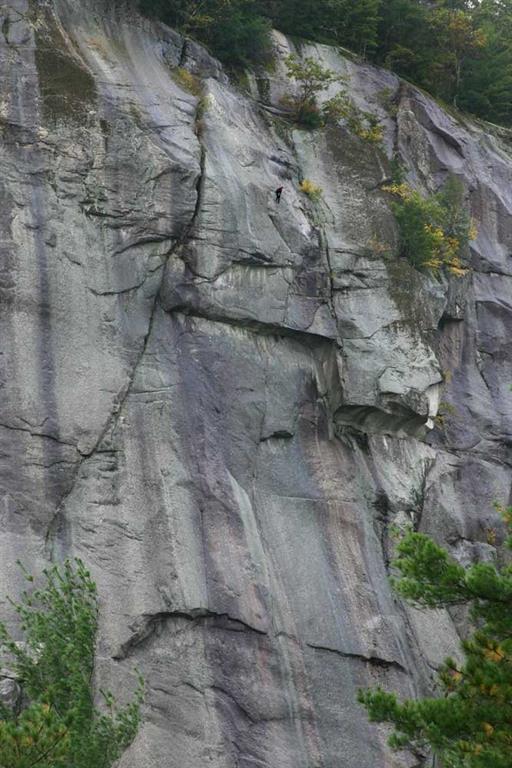Radar, the Military, and Wan Shi Tong’s Library
2020-08-31 09:15:38.000 – Nate Iannuccillo, Weather Observer/Education Specialist
Last Friday at Cathedral Ledge, my buddy Jon and I sat atop the first pitch of the diagonal on the Mordor Wall, mulling over the weather and assessing our options. We had decided to take a closer look at the weather after noticing the sharp, cool breeze and the building clouds overhead. Thanks to Jon’s radar app on his phone, we were able to confirm our suspicions that rain was on the way, so it turned out to be a nice validation of our meteorological intuition. We figured that we had a few hours at most to complete the route before the rain arrived, and after careful consideration, decided to play it safe and rappel right then and there. In any case, our decision to bail on our original plan started to look pretty good when the rain began a couple hours later, just as the radar suggested. I felt grateful to not be up high on the Mordor wall, where we would’ve been facing a tricky and complicated bailout.
The Mordor Wall, Cathedral Ledge
This made me very thankful for the radar technology that we now have at our fingertips, and it caused me to reflect on the practical applications of radar in society. Radar is an important tool in weather forecasting, and it’s also frequently relied on to ensure safe air and marine travel. My story boils down to recreational use, but I should mention that I routinely use radar at the observatory, and it is a vital tool for assessing in situ weather conditions throughout the region.
Radar, originally an acronym that stands for radio detection and ranging, works by bouncing radio waves off objects prone to reflecting these low frequency electromagnetic waves. After receiving the reflected waves, objects in the sky can be discerned. This is particularly useful when visible light fails us, with radar proving to be particularly useful at night, or when conditions obscure visibility.
The science behind radar was discovered and recognized before World War Two, but the war was largely responsible for the accelerated development and implication of radar technology in the interest of detecting inbound enemy aircraft. I’m sure that this technology would have been developed on its own, but I can’t ignore the fact that throughout history, the United States military as well as others, more often than not seem to be somewhere near the cutting edge of the latest and greatest in science and technology.
Historically speaking, in many cases, the concept of the military advantage often provided the impetus needed to develop new technology, and it reminds me of a segment of the popular television series Avatar: The Last Airbender, where the story’s heroes travel to a mythical library of vast proportion guarded by the spirit Wan Shi Tong, incarnate in the form of a massive barn owl. Wan Shi Tong is rather jaded by humanity, and he proclaims that “humans only bother learning things to get the edge on other humans”. When he discovers that team Avatar’s heroes are there to do just that, he decides to restrict his vast collection of knowledge forever, and sinks his library into the desert sand.
I can’t help but think that this is an extreme view, but maybe not without some truth to it, when I consider the historic interest in science and technology in the name of military superiority. Even looking at Mount Washington, I consider the heightened military presence on the summit during the cold war years, and how the military’s interest in the summit has certainly waned a bit since. And of course, this is by no means unreasonable when considering the circumstances of the cold war. And I should mention that since then, we still do a fair bit of product testing on the summit, putting various new technology through adverse weather conditions, albeit generally for private civilian companies.
I imagine some of these technologies were developed with both utility and financial incentive in mind, and I draw attention to this because I find it rare that science and technology are pursued for their own sake. This seems fair; science and technology are generally looked at as pathways to qualities that might be considered advantageous, whatever they may be. I feel like the important thing to remember is that we continue to approach science and technology with intention, purpose, and mindfulness, and that we keep asking ourselves questions along the way.
Nate Iannuccillo, Weather Observer/Education Specialist





